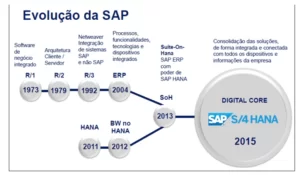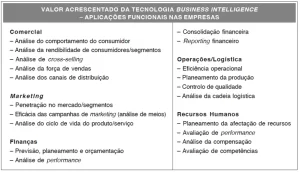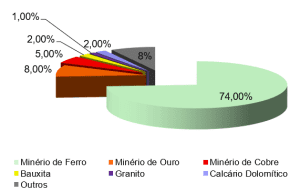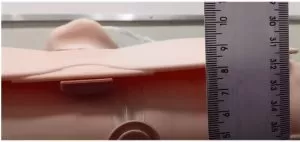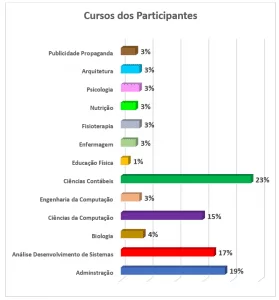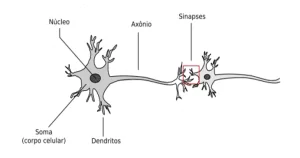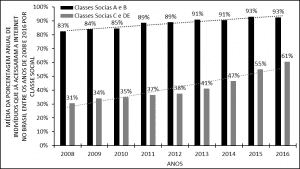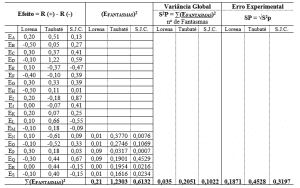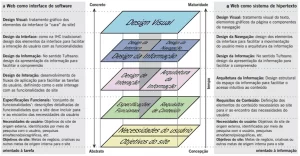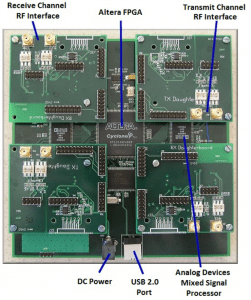REVIEW ARTICLE
FERRAZ, Fábio Henrique de Carvalho [1]
FERRAZ, Fábio Henrique de Carvalho. Technologies in Medicine 4.0 and medical resistance to new systems. Revista Científica Multidisciplinar Núcleo do Conhecimento. Year. 07, Ed. 02, Vol. 01, p. 05-18. February 2022. ISSN: 2448-0959, Access link: https://www.nucleodoconhecimento.com.br/technology-en/technologies-in-medicine
ABSTRACT
The influence of technological advances, especially in the health sector, has had a positive impact on medicine and its interventional practices since, at all times, new techniques and methods capable of improving the diagnosis and treatment of numerous diseases appear. In recent years, medicine, together with programs related to information technology and artificial intelligence, has promoted real transformations with the creation of, for example, projects for intelligent sensors and robotic algorithms that ensure patient comfort and safety and can be monitored from one’s own residence. In this vein, the combination of medical knowledge, combined with engineering principles and practices, form health/medicine 4.0. It should be noted that this logistics allows for greater chances of success in preventing, as well as curing, numerous diseases. However, the current medical society is facing a dilemma with poorly trained professionals due to the resistance they have to work with new technologies, and, from a multidisciplinary perspective, medical knowledge alone is not enough to monitor health 4.0. In this context, we aim to answer: How to mitigate the lack of training and medical resistance so that they can act correctly with the new technological demands in the health sector? Aiming to list the main problems reported by the experience of medical professionals themselves according to the published literature. With this, from bibliographic research, this article proposes to present a little of the technological evolution suffered in the engineering sector directly impacting the health sector and how this evolution had an impact on medical activities. In addition, it is intended to present a possible solution to the reported problems. The facts show that, in short, the benefits of technological advances aimed at medicine 4.0 are recognized as effective and that investing in training for the qualification of professionals in the health area is a path, however, organizations that want these systems need to be aware that the implementation process can be a difficult task that requires the ability to withstand the influence of several factors, the main one being human resistance to new technologies.
Keywords: Technological Evolution, Electronic Projects, Health 4.0, Artificial Intelligence, Medical Resistance.
1. INTRODUCTION
From the perspective of technological evolution from the development of projects aimed at the medical area, it appears that such projects have, every day, contributed effectively to human development. In this context, the following stand out: Artificial Intelligence, digital glasses, holograms, 3D printing, internet of things, big data, etc.; which are the main innovative tools that mainly contribute to technologies applied to health 4.0. This has a strong impact on the way new treatments are developed in health management and even in patient follow-up. Thus, with the use of computerized systems, engineering professionals seek to develop new technologies for practices aimed at medical practice, providing the cure of various diseases, previously indecipherable for medicine (CALDAS, 2021). Thus, it is important that these professionals can work together with medical professionals, with an exchange of knowledge, resulting in mechanisms and instruments that are increasingly faster and more accurate for the hospital routine. Thus, the fusion of knowledge and the dense union of professionals from both areas will enable many other benefits for the whole community, being possible, for example, highly complex surgical interventions occurring safely and effectively (VERZUH, 2000).
The arrival of innovations in all medical specialties is already perceptible, especially in the surgical field (cardiology, brain, etc.), benefiting patients and doctors through the precision and speed of information so necessary for saving lives. Therefore, it can be said that the life expectancy of a society is directly linked to the technologies implemented in the medical field and in the training of its personnel, providing increasingly assertive diagnoses that slow down the offensive progression of various diseases. It is interesting how engineering professionals, working in medical technology, feel, with their deeds and gifts, which benefit the most precious asset, namely, human life (MURARO, 2009).
Despite this technological perspective in favor of Medicine 4.0, current medical society still suffers from untrained professionals and others who still resist technological alternatives in the medical routine. In this context, we aim to answer: How to mitigate the lack of training and medical resistance so that they can act correctly with the new technological demands in the health sector? Aiming to list the main problems reported by the experience of medical professionals themselves according to the published literature. It is not enough just the contribution of engineering creating innovative projects, above all, it is also necessary to add a set of alternatives that make professionals and the entire medical team receptive to the knowledge of the new demands created, in addition to the knowledge they have already acquired in their training. Within this context, the present article was prepared in order to present the advances in health 4.0 and to find out what are the main causes for medical resistance to the implementation of technological systems, especially with regard to the electronic records part, which is where it is most found. resistance from medical professionals. To achieve this objective, bibliographic research will be the main tool.
2. DEVELOPMENT
2.1 THE ROLE OF ENGINEERING IN THE MEDICAL AREA AND CURRENT CHALLENGES
It is known that engineering aimed at creating electronic projects in the medical area has a strong presence in clinics and large hospitals. Thus, this practice seeks to maintain a correct structure for the health area through the implementation of various instruments and processes, which benefit medicine (BARRA, 2010). All the methods used in the mathematical sciences are carried out in this context, forming true modern biological systems. In fact, it was at that moment that the medical area found itself restricted in its efforts and considered the need to join with the technological area, making innovation contribute to the salvation and prevention of various diseases. The factors are explained by the fact that electromedicine uses mathematical tools, as well as physical and chemical processes, in order to establish a link with biological functions, creating theories about the understanding of the human body, in order to use techniques and methodologies (ANTUNES, 2010). Thus, artificial organs were created as a basis for an effective study, in addition to important equipment related to implants, among other practices. The result of this merger was the growth of large hospital centers and important systems and projects created to combat and prevent different types of diseases.
However, it is known that, when it comes to the human organism, the challenges are intense. In this way, engineering practices related to electronic projects in the field of medicine have evolved according to the growth of social awareness. Dedication to research must be constant, because despite intense efforts, many medical specialties need new implementations. One of the most benefited areas is linked to orthopedics, in addition to the cardiorespiratory specialty, since it has important elements available for research. In fact, stated Infantosi (2001):
O que nos dias atuais se entende como Bioengenharia está muito ligado ao desenvolvimento da instrumentação e, em particular, à instrumentação médica, cujo desenvolvimento é necessário a interação de médicos e engenheiros, nestes incluídos físicos, químicos, matemáticos e cientistas da computação. Surgem então outros campos ligados à Bioengenharia, como Bioinformática, Genômica, etc.
The creation of biomedical engineering, in fact, occurred due to the commitment of engineers who were determined to invest in the area, seeking cutting-edge technology in order to solve various problems in the health area. In fact, not only medicine, but various sectors of biological science have made extraordinary gains. Thus, it is known that the success that occurred in the medical and biological area is the result of various knowledge contained in mathematics, physics, engineering, information technology, among other areas of knowledge, related to exact sciences. Thus, the union of several disciplines made the medical area successful and started to work with modern technologies.
As previously mentioned, for there to be a real interaction between professionals from the most varied areas, in order to benefit the medical area, many attitudes must be left aside, such as pride and vanity, since all professionals (physicists, engineers, mathematicians and doctors) must act in harmony and respect for the greater good. So, when that happens, success is really guaranteed (PAIM, 2005). Therefore, professionals who work in this direction, do so with passion for the profession and vision of the well-being of a society. Regarding this issue, Oliveira (2003) stated:
O que, por um lado, historicamente, se justifica, hoje em dia, já não deveria ser mais porque a Engenharia Biomédica/Bioengenharia não utiliza somente conceitos da Engenharia Elétrica. Utiliza-se também das outras engenharias, por exemplo, da Mecânica. Então, o que acaba acontecendo é que, às vezes, até mesmo o fato de um grupo de Engenharia Biomédica/Bioengenharia estar inserido dentro do departamento sobre a inter e multidisciplinaridade da Engenharia Biomédica/Bioengenharia, pode ser um fator limitante. Isso pode acarretar uma inibição na criação de linhas de pesquisa com menor ênfase. Enfim, essa situação, às vezes, resulta na não criação de uma nova linha por se estar umbilicalmente ligada a um departamento de Engenharia Elétrica. Ou então, em uma mesma universidade trabalhando em separado, quando eles deveriam estar trabalhando em conjunto.
Thus, among the activities of such a professional, there will be research in the area of cellular engineering, biomechanical prostheses, cardiovascular engineering, as well as related to the respiratory system, among many other actions that have benefited health and the cure of diseases in the world. . In this sense, Oliveira (2003) also observed:
Os equipamentos, em particular os digitais, foram cada vez mais incorporados à rotina das unidades de atendimento à saúde, em especial às hospitalares. E isso gerou, inicialmente, uma nova necessidade: o gerenciamento dos equipamentos. Até então, o gestor destas unidades era profissional da área médica. A incorporação da tecnologia cada vez mais sofisticada e em maior número se, por um lado, contribui para a melhoria da qualidade do atendimento à saúde, poderia aumentar, em contrapartida, os custos deste atendimento. Logo, tornou-se necessário formar equipes constituídas de especialistas na gestão desta tecnologia; surge, então, a Engenharia Clínica.
No Brasil e demais países, o impacto das novas tecnologias hospitalares, bem como a revolução tecnológica da década de 80, mostrou a importância de se formar, tais profissionais. Desta forma, a atuação do profissional da Engenharia Biomédica/Bioengenharia passa a se dar também dentro do sistema de saúde, no qual ele passa a ser consultado tanto sobre a aquisição do equipamento quanto em relação ao seu uso mais adequado. A engenharia clínica surge, por conseguinte, como uma consequëncia da incorporação da tecnologia no atendimento à saúde, e o profissional que exerce esta função é um engenheiro biomédico com atuação neste ramo.
As a result, bioengineering has become a real necessity in the improvement of health-related services. Regarding the growth of technology in Brazil, it is known that it was, mainly after 1990, that the growth of postgraduate courses in the areas of biomedical engineering took place, where there was a real structuring of the theme. However, many restrictions and barriers occur in everyday life (COPPE/UFRJ, 2021):
Apesar do contexto desfavorável à expressão da criatividade que resulta em desenvolvimento de tecnologia e inovação, os professores e alunos do Programa de Engenharia Biomédica da Coppe não desistiram. Principalmente na área de Instrumentação Biomédica, a pioneira do Programa, continuaram a estudar e desenvolver sistemas e equipamentos médicos, em teses e dissertações que persistem na disposição de contribuir para gerar tecnologia médica adaptada à realidade brasileira, em termos de custos e de acessibilidade. Por ter seu foco no desenvolvimento de instrumentação para a área da saúde em geral, a área de Instrumentação atua numa variada gama de interesses, em linhas de pesquisa que vão mudando ao longo do tempo. Nos anos 1990 havia, por exemplo, uma linha de óptica, que trabalhava no desenvolvimento do uso de laser e fibras ópticas e foi descontinuada com a saída do professor que a comandava. Algumas linhas, porém, permanecem desde os tempos iniciais, como a de bioimpedância, na qual os pesquisadores buscam explorar, em variadas aplicações médicas, o fenômeno biofísico da resistência que os tecidos biológicos oferecem à passagem de correntes elétricas.
The demand for biomedical engineers has grown every day and, currently, there are several undergraduate courses spread across the country, such as: Santo André, São José dos Campos, Montes Claros, Belo Horizonte, Uberlândia, Rio de Janeiro, among other states (COPPE/UFRJ, 2021). Thus, these courses sought to meet the current demand for biomedical engineers, who work in various health centers throughout the country. It is important to mention the responsibility of the engineer who works in the area of electromedicine, since his training must, in fact, be structured, as such a professional must be a deep expert in several disciplines, mainly related to human anatomy. The engineer’s knowledge also covers organization and management techniques, and must have broad emotional intelligence to perform well in large groups, leading effectively and innovatively, in order to benefit the population. Also noteworthy is the area of pulmonary engineering, through the study of mechanical ventilation. In the meantime, lung ventilators began to be electronically controlled. Thus, from the year 2000, the study was expanded and began to be directed to the area of exercise physiology Expo Hospital Brasil (2021). This period marked great technological advances, remembering that this factor could prevent the continuity of such technologies, both in public health systems, as in others.
Thus, it was urgent for area managers to seek specific solutions regarding the problem. Despite the barriers, the future of electromedicine is promising, since large projects are developed in the areas of engineering related to neurology, in addition to bioinformatics, biomechanics, among others, as can be seen in the norms visualized by the Regional Council of Medicine of the State. of São Paulo (CRMSP) in its resolution 097. The techniques used are becoming more advanced every day, and the field of neural engineering has advanced considerably, since it receives support from several sectors. In this sense, an electrical stimulator is fixed in the brain of people who have Parkinson’s, in order to better observe brain functioning (KENSKI, 2011). In the same sense, the premises observed by Coppe/Ufrj (2021) have become increasingly secure, namely:
Uma das mais recentes linhas de pesquisa do Programa é a bioinformática. Implementada no Laboratório de Engenharia de Sistemas de Saúde, busca desenvolver modelos matemáticos para analisar o genoma e classificar as informações obtidas. Essas técnicas permitem identificar, por exemplo, padrões de grupos de genes que se associam para provocar uma determinada doença.
Therefore, the advances are notorious and increasingly innovative. However, professionals should be aware of possible errors in the execution of such types of equipment, since different types of losses and waste of various equipment are contacted, due to the lack of trained professionals. In this sense, the profile of the biomedical engineer must be creative and motivating, since an effective and competent professional will work both in hospitals and companies, as well as in the elaboration of new electronic projects aimed at health. Another field that opens doors to electromedicine concerns Universities and academic research, through large centers and Public Universities, as well as private institutions (PREGUER, 2005), where the performance is carried out in projects in the area of bioengineering, using instruments such as prostheses, orthotics, as well as artificial organs.
As previously mentioned, hospital management is a fertile field for the performance of the hospital engineer, in order to train professionals for the correct maintenance of the electronic devices used, reducing unnecessary expenses and losses, as can be seen at Expo Hospital Brasil (2021):
As condições relacionadas ao uso, manutenção e gestão de equipamentos odontomédico hospitalares, de um modo geral, são bastante precárias no país, principalmente pela falta de profissionais especializados na área. Atualmente, devido à ausência de profissionais com formação específica para essa atividade, os hospitais contratam engenheiros civis, engenheiros eletricistas ou, até mesmo, técnicos ou físicos com especialização em física médica para desempenhar as atividades de recuperação, especificação e manutenção de equipamentos.
Thus, all the structuring and planning within a large center passes firstly by the bioengineer, who plans the entire structure related to the installation of equipment, investigates the possible risks and improves the quality of the place, which must be inspected in detail and its practice is from the electrical and hydraulic structure of the hospital center, to practices related to an efficient management, becoming a current challenge in electromedicine.
Added to all this information, referring to the new demands of medical engineering, currently, medicine has been the object of constant studies and deepening concerning the new electronic projects, which use different possibilities and resources, in order to provide quality of life for patients and physicians, culminating in the so-called medicine 4.0, whose challenge is to unite more and more health professionals with professionals working in the development of electronic projects (KENSKI, 2011). Only with multidisciplinary knowledge is it possible to use artificial intelligence in the contribution of therapeutic practices, namely, prevention, diagnosis, treatments in intensive units, treatments performed by telemedicine, among other possibilities, which culminate in the advancement of medicine.
2.2 TECHNOLOGICAL ADVANCES IN HEALTH AND MEDICAL BEHAVIOR TO THE IMPLEMENTATION OF NEW TECHNOLOGIES
The demand for new technologies increased in 2020 with the consequences brought by the COVID-19 Pandemic, causing important European countries, such as Italy, to experience overloads in their respective health systems and highlight the need to invest in their facilities with technologies and health care models (FREDERICO, 2021). It is undeniable, therefore, that the technological issues in the pandemic were barriers found in important countries considered developed.
The verifications of correct funding within a satisfactory management system are pillars for medical technologies to be put into practice anywhere in the world (LOBO, 2021). Specifically in Brazil, the aforementioned author stated that advances have occurred in a positive way, since cloud storage has highlighted the techniques brought by artificial intelligence, making medicine have accurate test results and chances of greater cures of important and devastating diseases. illnesses.
Among the advances, artificial intelligence (AI) has become a highlight in electromedical engineering, since, specifically in the health area, AI enables a decrease in deaths, prevention and lower incidence of medical errors, as verified by Lobo (2021) :
Há que se considerar que a identificação de problemas e padrões (“pattern recognition”) pelo computador, reconhecendo, por exemplo, uma lesão dermatológica, ou fazendo um laudo em um exame de imagem, ou, ainda, pelo processamento de um grande volume de dados de pacientes (“big data”), poderá indicar o “know what” de um problema de saúde.
Mas caberá ao médico discutir o caso com seu paciente agregando o seu “know-why”, orientando-o e aliviando suas tensões, já que o computador não tem emoções e uma compreensão do “outro”.
As a result, one begins to realize that, with the arrival of new technological demands, the level of demand regarding training and interaction between doctor and patient ends up being higher as well, and the former must be aware of constant innovations, extending greater autonomy. to the patient, who must also engage in the new interactions brought about by telemedicine.
Another relevant issue that has also been affecting the way health professionals work is the use of information technology to remodel medical practices, which deal with applications aimed at administrative processes and clinical procedures. Basically, in recent years, hospital organizations have sought to take advantage of the opportunities generated by advances in technology with the aim of improving the quality of services provided, reducing operating costs and increasing the efficiency of administrative and clinical processes. However, some research has pointed to the fact that several hospitals have consumed large amounts of financial resources due to unsuccessful initiatives (PARÉ, 2002). Other studies have recognized that physician resistance is one of the main causes for the underutilization or failure of such technological implementations (LAPOINTE et al., 2002; TAN, 2005; HORAN et al., 2005).
According to Horan et al. (2005), physicians form a group of users with distinct and differentiated characteristics from other computer users, being highly pressured by time and dealing with vital information and decisions. With this, they become a challenging group for the acceptance of new technologies. Entering the main causes (problems) that generate medical resistance to the implementation of new systems mentioned in the work of Magalhães (2006), we have: Lack of security, flexibility of the system, technological infrastructure, lack of familiarity of doctors with the use of computers.
- Lack of Security
Some doctors inquire about the authenticity and legal validity of prescriptions made electronically. The issue of security and privacy of patient data is undoubtedly extremely important for electronic prescribing. The fear that the action of hackers and the insecurity of the system could lead to the loss of medical information frighten most users (CHEONG, 1996; MAGALHÃES, 2006).
- System Flexibility
It is alleged that the system lacks flexibility to perform certain tasks, such as: difficulties in entering medications into the system and redoing the entire prescription if an item needs to be added in a certain sequence. This issue may be related to the lack of participation of physicians in the process of designing the system. For this reason, the system proves to be impractical and inefficient to carry out the doctor’s tasks (MAGALHÃES, 2006).
- Technological Infrastructure
According to the perception of some doctors, the system itself, at times, becomes slow and unstable. The system response time plus the effort spent on data entry represents, for physicians, a waste of time (MAGALHÃES, 2006).
- Lack of familiarity of physicians with the use of computers
Typically, the entire system is designed to be simple and easy to learn. However, the lack of knowledge and familiarity in using computers makes it difficult for some physicians to use the system, especially for older physicians who claim to see no benefit in the system (MAGALHÃES, 2006).
In view of the problems mentioned above, we return to the initial question of the problem: How to mitigate the lack of training and medical resistance so that they can act correctly with the new technological demands in the health sector? And the answer lies in the creation of a simpler and easier system to learn, in addition to instrumental training through training for doctors to use the system correctly. Therefore, this lack of technological education served as a barrier to the implementation process. This fact suggests that without the necessary education and training of the physician, difficulties in using the system can frustrate an entire attempt at computerization (MUNDY, 2004).
3. FINAL CONSIDERATIONS AND CONCLUSIONS
In view of the facts, it appears that technological innovation in health is an increasingly present factor in the current reality and advances in the medical field have occurred, thus increasing the life expectancy of the population. New facts, such as the emergence of robots, have led to the emergence of cutting-edge technologies, with due union between the medical and engineering fields. As a result, diagnoses become increasingly assertive.
As analyzed, research and development are key words for success in the area. Business barriers and personal interests need to be broken down so that, in fact, excellence in healthcare happens and benefits everyone, not just the interest of a minority. Therefore, the medical professional who works in order to seek the cure of people must recognize the need for engineering in the health area. In addition, it is important that the government create facilitating policies for the joining of biological and exact areas, since, in current medicine, artificial intelligence is already being talked about as an auxiliary tool in the collection of medical data and analysis of medical records, contributing with better clinical and hospital organization.
As for the lack of training and existing medical resistance to new technologies, a problem raised in this study, especially those focused on the area of information technology, it is important to know exactly the context where the system will be implemented, in order to clearly understand how it will be implemented. will be perceived by its potential users (FURNIVAL, 1995), taking into account that the creation of a simpler and easier system to learn, in addition to instrumental training, through training for doctors is one of the paths to be followed to mitigate this issue. . In short, it is already a fact that the benefits of systems aimed at information technology in the medical field are admittedly superior to traditional methods. Thus, the electronic method offers a better and more agile communication channel between physicians and other health professionals, reduces medication errors, transcription and costs related to paper handling and archiving, among others. Currently, for greater motivation of medical users, applications from new technologies have aimed at the simulation of real situations, applied to the training of professionals to reduce or even eliminate the resistance presented by doctors who are already of a certain age and not familiarized with computer systems.
REFERENCES
A Evolução da Engenharia Biomédica e os Avanços para o Setor de Saúde. Disponível em: <http://expohospitalbrasil.com.br/a-evolucao-da-engenharia-biomedica-e-os-avancos-para-o-setor-de-saude/>. Acesso em 05 de dezembro de 2021.
ANTUNES, E. et al. Gestão da tecnologia biomédica: tecnovigilância e engenharia clínica. Paris: Editions Scientifiques ACODESS, 2010. 210 p.
BARRA, D. C. C; DAL SASSO, G. T. M. Tecnologia móvel à beira do leito: processo de enfermagem informatizado em terapia intensiva a partir da cipe 1.0® . Texto contexto enferm. 2010. JAN-MAR. 19(1):54-63.
CALDAS, R. A. A construção de um modelo de arcabouço legal para Ciência, Tecnologia e Inovação. Disponível em: <http://www.inovacao.uema.br/imagens-noticias/files/A%20construcao%20de%20um%20modelo%20de%20arcabouco%20legal%20para%20Ciencia,%20Tecnologia%20e%20Inovacao.pdf>. Acesso em: 07 de novembro de 2021.
CHEONG, I. R. Privacy and security of personal health information. Journal of Informatics in Primary Care 1996: 15-17.
CONSELHO REGIONAL DE MEDICINA DO ESTADO DE SÃO PAULO. Resolução nº 097/2001. Institui o Manual de Princípios Éticos para Sites de Medicina e Saúde. Diário Oficial do Estado de São Paulo, 9 de novembro de 2001.
DANIELLI, O. Saúde 4.0: a revolução entre conexão e inteligência nos cuidados na saúde. Disponível em: <https://neomed.com.br/saude-4-0-a-revolucao-entre-conexao-e-inteligencia-nos-cuidados-na-saude/>. Acesso em: 04 de novembro de 2021.
FRANÇA, GENIVAL VELOSO. Telemedicina. Revista Bioética. Disponível em: <https://revistabioetica.cfm.org.br/index.php/revista_bioetica/article/view/266>. Acesso em: 07 de novembro de 2021.
FREDERICO, Luiz Fernando. O que startups de telemedicina e healthtechs podem ensinar às empresas do setor. E também ao SUS. Disponível em < https://hazeshift.com.br/startups-telemedicina-healthtechss/>. Acesso em: 08 de novembro de 2021.
FURNIVAL, A. C. A participação dos usuários no desenvolvimento de sistemas de informação. Ciência da Informação 1995: 25: 2.
HORAN T, TULU B, HILTON B. Understanding Physician Use of Online Systems: An Empirical Assessment of an Electronic Disability Evaluation System, in E-Health Systems Diffusion and Use: The Innovation, the User and the USE IT Model, Ed. Schuring, R.W. and Spil, T.A.M., by Idea Group Inc. 2005.
INFANTOSI. A. F. C. Criação Bioengenharia no Brasil: entrevista: [junho.2001]. Entrevistadora: Ana Maria Antonio. 02 Fitas Cassetes.
KENSKI, V. M. Educação e tecnologias: o novo ritmo da informação (8a ed.). Campinas 2011, SP: Papirus.
LAPOINTE L, LAMOTHE L, FORTIN J. The Dynamics of IT Adoption in a Major Change Process in Healthcare Delivery. Proceedings of the 35th Hawaii International Conference on System Sciences, 2002.
LOBO, LUIZ CARLOS. Inteligência artificial, o Futuro da Medicina e a Educação Médica. Disponível em: <https://www.scielo.br/j/rbem/a/PyRJrW4vzDhZKzZW47wddQy/?lang=pt#>. Acesso em: 05 de novembro de 2021.
MAGALHÃES, C. A. S. Análise da resistência Médica à implantação de sistemas de registro eletrônico de saúde. [Analysis of Medical Resistance to the Introduction of Systems for Electronic Health Records]. 2006.
MUNDY D, CHADWICK D. W. Electronic transmission of prescriptions: towards realising the dream. Int. J. Electron Healthc. 2004: 1.
MURARO, R.M. Os avanços tecnológicos e o futuro da humanidade: querendo ser Deus? Petrópolis (RJ):Vozes; 2009.
OLIVEIRA, S. M. Início da Bioengenharia na Usp e no Brasil: entrevista: [maio, 2003]. Entrevistadora: Ana Maria Antonio. 02 Fitas Cassetes.
PAIM, J.S. Vigilância da saúde: tendências de reorientação de modelos assistenciais para a promoção da saúde. In: Czeresnia D, Freitas CM.Promoção da saúde: conceitos, reflexões, tendências.Rio de Janeiro (RJ): Fiocruz; 2005. p.519-30.
PARÉ G. Implementing clinical information systems: A multiple-case study within a US Hospital. Health Services Management Research 2002; 15: 71-02.
Programa de Engenharia Biomédica. COPPE/UFRJ. Disponível em: <http://www.peb.ufrj.br/noticias/RevistaBiomedica40Anos.PDF>. Acesso em: 06 de novembro de 2021.
PREGER, C. M. Educação médica continuada à distância em endocrinologia e metabologia. Arq. Bras. Endocrinol Metab. 2005;49(4):584-95
TAN J. E-Health Care Information Systems: An Introduction for Students and Professionals. Jossey-Bass; 2005.
VERZUH, E. MBA Compacto gestão de projetos. Rio de Janeiro: Campus, 2000.
[1] Postgraduate degree in Electronic Project Development Engineering and in Automation Engineering and Industrial Electronics.
Sent: November, 2021.
Approved: February, 2022.

